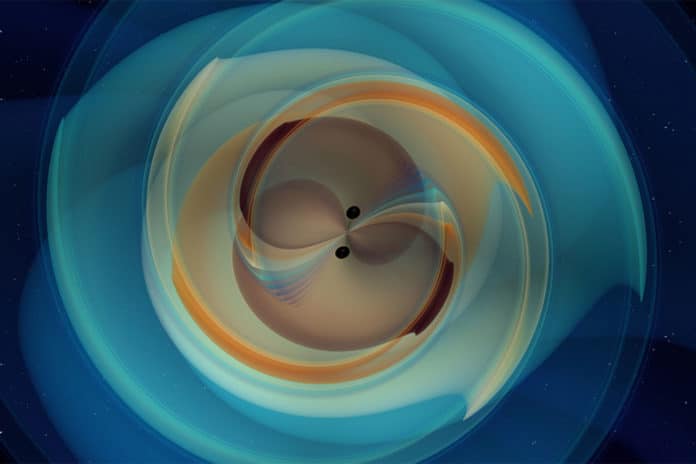On May 21, 2019, MIT scientists detected a signal labeled GW190521 from the most massive black hole merger observed in gravitational waves. According to scientists, the black hole must have a mass between 100 and 1,000 times that of the sun.
The signal of the merger is the first clear detection of an “intermediate-mass” black hole. This discovery was made with the National Science Foundation’s Laser Interferometer Gravitational-wave Observatory (LIGO), a pair of identical, 4-kilometer-long interferometers, and Virgo, a 3-kilometer-long detector in Italy.
The signal that resembles four short wiggles lasted less than one-tenth of a second. It was produced by a source that is roughly five gigaparsecs away when the universe was about half its age. This intriguingly makes it one of the most distant gravitational-wave sources detected so far.
What’s more, the merger appears to be the most massive yet, involving two inspiraling black holes with masses about 85 and 66 times the sun‘s mass.
When scientists measured each black hole’s spin, they found that the black holes were circling ever closer together. The black holes are spinning at angles that were out of alignment with the axis of their orbit. The black holes’ misaligned spins likely caused their orbits to wobble, or “precess,” as the two Goliaths spiraled toward each other.
This implies that the signal indicating the merging of two black holes. The merger created an even more massive black hole of about 142 solar masses. It released an enormous amount of energy, equivalent to around eight solar masses, spread across the universe in gravitational waves.
Pedro Marronetti, program director for gravitational physics at the National Science Foundation, said, “LIGO once again surprises us not just with detecting black holes in sizes that are difficult to explain, but doing it using techniques that were not designed specifically for stellar mergers. This is of tremendous importance since it showcases the instrument’s ability to detect signals from completely unforeseen astrophysical events. LIGO shows that it can also observe the unexpected.”
The heavier of the two black holes that produced the GW190521 signal, at 85 solar masses, is the first so far detected within the pair-instability mass gap.
LIGO member Alan Weinstein, professor of physics at Caltech, said, “This event opens more questions than it provides answers. From the perspective of discovery and physics, it’s a fascinating thing.”
Alan Weinstein, professor of physics at Caltech, said, “Since we first turned on LIGO, everything we’ve observed with confidence has been a collision of black holes or neutron stars. This is the one event where our analysis allows the possibility that this event is not such a collision.”
“Although this event is consistent with being from an exceptionally massive binary black hole merger, and alternative explanations are disfavored, it is pushing the boundaries of our confidence. And that potentially makes it extremely exciting. Because we have all been hoping for something new, something unexpected, that could challenge what we’ve learned already. This event has the potential for doing that.”
Journal References:
- GW190521: A Binary Black Hole Merger with a Total Mass of 150 M⊙. DOI: 10.1103/PhysRevLett.125.101102
- Properties and Astrophysical Implications of the 150 M ⊙ Binary Black Hole Merger GW190521. DOI: 10.3847/2041-8213/aba493
